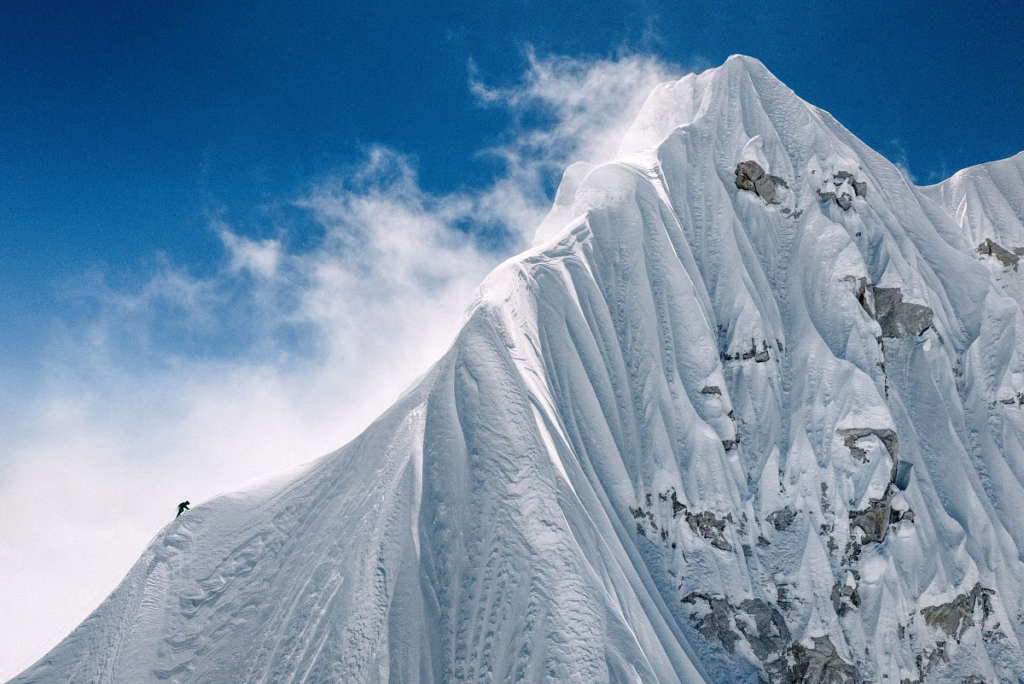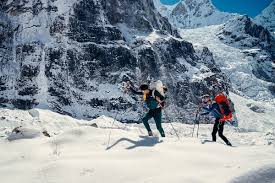Beyond Everest lies a world few have seen. While the world’s tallest mountain has long captured global imagination, a quiet revolution is unfolding among mountaineers — a growing number of climbers are turning away from Everest’s crowded slopes to explore Nepal’s hidden peaks. These lesser-known summits, remote and rugged, offer a raw, untouched beauty that rekindles the true essence of exploration.
As commercial expeditions make Everest more accessible, the spirit of adventure is migrating to these forgotten corners of the Himalayas. Here, climbers are rediscovering what it means to face nature — not for fame, but for freedom.
The Shift Beyond Everest
For decades, Everest has stood as the ultimate symbol of human endurance and ambition. But as climbing permits increased and the summit became increasingly commercialized, many mountaineers began to question whether the challenge had lost its purity.
Now, seasoned climbers are heading beyond Everest, toward Nepal’s remote ranges — areas like Rolwaling, Manaslu, Dolpo, and Kanchenjunga — where unmarked trails, fewer crowds, and unexplored routes await. These peaks might not make global headlines, but they carry an allure that Everest no longer offers: solitude, serenity, and discovery.
For these adventurers, climbing is no longer about standing on the world’s highest point. It’s about standing somewhere new.
Nepal’s Hidden Peaks: The New Frontier
Nepal is home to more than 1,300 identified peaks, and only a fraction have been summited. Many remain unnamed, unclimbed, and uncharted — tucked deep within valleys and ranges that challenge even the most experienced explorers.
Among these hidden gems are peaks like Khangri Shar, Lhonak, and Putha Hiunchuli — remote summits that demand technical expertise, endurance, and an open spirit. Some lie within conservation areas where wildlife roams freely and human footprints are scarce.
For climbers chasing something more personal than a world record, these hidden peaks beyond Everest represent a return to authenticity — to adventure for adventure’s sake.
The Call of Untouched Beauty
Ask any climber why they’re venturing beyond Everest, and their answers often echo the same sentiment: peace, purity, and purpose. The landscapes are wilder, the silence deeper, and the encounters with nature more intimate.
Unlike the well-trodden routes to Everest, the paths to these hidden peaks often weave through ancient villages, glacial lakes, and untouched forests. Each expedition feels less like a conquest and more like a conversation with nature.
In these remote corners, climbers find something Everest can no longer offer — a genuine connection with the mountain, unfiltered and profound.
Rediscovering the Spirit of Exploration
In the golden age of mountaineering, exploration was defined by uncertainty. There were no fixed ropes, GPS routes, or satellite updates — only courage and curiosity. Today, that spirit lives on beyond Everest.
Modern climbers chasing Nepal’s hidden peaks embrace that old-school grit. Many of these expeditions involve charting new routes, relying on minimal support, and navigating unpredictable weather. It’s as much about inner discovery as it is about physical endurance.
For these adventurers, each ascent becomes a story of self-reliance, humility, and awe — a return to the roots of exploration that first drew humankind to the mountains.
Sustainable Climbing and Environmental Awareness
As Nepal’s tourism grows, the environmental cost of large-scale Everest expeditions has become a concern. From waste accumulation to overcrowded base camps, the mountain’s natural balance has been strained.
Climbers going beyond Everest are part of a growing movement toward sustainable exploration. These expeditions often focus on smaller teams, low-impact routes, and local partnerships that benefit nearby communities.
By shifting attention to lesser-known peaks, Nepal can distribute tourism more evenly, easing pressure on Everest while encouraging responsible adventure across its vast landscape.

Communities at the Heart of the Mountains
Every expedition into Nepal’s hidden peaks passes through local villages where mountain hospitality thrives. The Sherpa, Gurung, and Tamang communities, long celebrated for their strength and kindness, remain the unsung heroes of Himalayan exploration.
Climbers traveling beyond Everest often speak of the deep connections they form with locals — sharing meals, stories, and respect for the sacred mountains. In return, the presence of smaller expeditions supports these communities through eco-tourism, helping preserve both livelihoods and culture.
In this way, the journey beyond Everest becomes more than a climb; it becomes a cultural exchange and a shared celebration of resilience.
The Rise of New Generation Climbers
A younger generation of climbers is leading this shift. Many grew up idolizing Everest legends but now seek their own paths — driven by purpose rather than publicity.
These adventurers are redefining what success looks like. For them, summiting an unnamed 6,000-meter peak holds more meaning than following a crowded trail. They chase personal growth, not global recognition.
Social media has also played a role, showcasing Nepal’s lesser-known regions and inspiring others to explore beyond Everest. Through breathtaking images and heartfelt stories, they’re proving that true adventure still exists — it just takes a different direction.
Challenges of the Hidden Himalayas
While the appeal of unexplored peaks is undeniable, these expeditions come with immense challenges. The routes are less mapped, the weather more unpredictable, and the logistics far more complex.
Climbers often face days without proper trails or communication. Medical help can be days away, and supplies are limited. Unlike Everest, where infrastructure supports hundreds of expeditions each year, Nepal’s hidden peaks demand complete self-sufficiency.
Yet, this unpredictability is precisely what draws climbers beyond Everest. It’s not about comfort — it’s about courage. Every summit reached under such conditions becomes a symbol of perseverance and humility.
Technological Evolution Meets Ancient Terrain
Even in these remote regions, technology is changing the way people climb. Lightweight gear, satellite navigation, and weather-tracking tools allow modern mountaineers to explore safely without losing the raw thrill of adventure.
Combined with traditional wisdom from local guides, these innovations open up new routes once deemed impossible. The balance of old and new — technology and tradition — defines the new age of exploration beyond Everest.
Nepal’s Untapped Potential
For Nepal, this shift holds incredible promise. The country’s vast and varied geography means there’s still so much left to discover — from unclimbed summits to hidden glaciers and ancient trails.
The government has recently encouraged climbers to explore new routes and peaks, offering incentives for lesser-known expeditions. This not only boosts tourism but also highlights Nepal’s identity as more than the home of Everest — it’s a nation of countless mountains, each with its own story.
Adventure Tourism Reimagined
Adventure travel in Nepal is evolving. Trekking and climbing are no longer confined to famous names like Everest Base Camp or Annapurna Circuit. Travelers are now seeking immersive, offbeat experiences — from the remote trails of Dolpo to the mystical valleys of Mustang.
These journeys go beyond Everest, embracing nature, culture, and sustainability. For many, it’s not about how high they climb but how deeply they connect.
The new era of Himalayan exploration isn’t about breaking records. It’s about breaking boundaries — within and beyond.
The Emotional Summit
Ask any climber who’s ventured to Nepal’s hidden peaks what they’ve found, and they’ll tell you: it’s not just the summit that changes you — it’s the journey.
There’s something profoundly humbling about standing on an unnamed peak, looking at the endless expanse of snow and silence. It reminds us of our place in the world — small, yet capable of great wonder.
These moments are what truly define going beyond Everest. They remind climbers why they started: to feel alive, to connect, to explore.
The Future of Himalayan Exploration
The future of mountaineering in Nepal lies not in the height of its peaks but in the depth of its stories. As more climbers choose lesser-known routes, they’re rewriting what it means to conquer mountains.
Expeditions are becoming more inclusive, with more women, local guides, and eco-conscious travelers joining the movement. This shift toward sustainable and soulful climbing ensures that Nepal’s mountains — both famous and hidden — will continue to inspire generations.
Beyond Everest, a new legacy is being written — one built on respect, exploration, and the quiet triumphs of those who dare to dream differently.
A Journey That Never Ends
In the end, going beyond Everest isn’t just a physical journey; it’s a spiritual one. It’s about stepping into the unknown with courage and coming back transformed.
For every climber who chooses Nepal’s hidden peaks over its crowded trails, there’s a deeper reason — the desire to touch something pure, to feel the pulse of the Earth beneath their boots, and to return home carrying stories no one else has lived.
The mountains of Nepal still hold endless mysteries. Everest may be the tallest, but beyond it lie thousands of summits that speak to the soul — waiting, quietly, for those who listen.
Do follow us: Instagram
Read More: Qatar Asks Hamas Leaders to Leave Following U.S. Pressure



